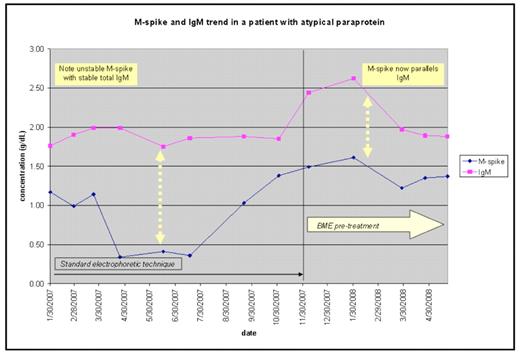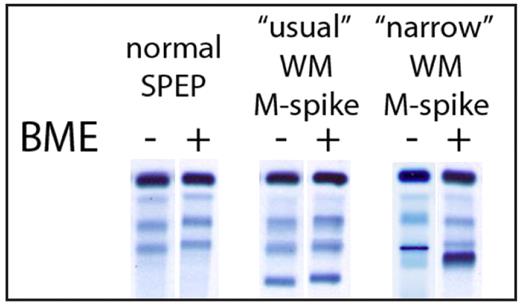Abstract
The densitometric quantitation of the M-spike in patients with a monoclonal gammopathy is a standard method used to monitor diseases such as multiple myeloma and Waldenstrom’s macroglobulinemia. Typically, M-spike quantitation shows synchronous parallel trends with other measures of disease status, such as nephelometric immunoglobulin heavy chain measurements, and with clinical condition. However, we report a series of four patients with Waldenstrom’s macroglobulinemia and IgM paraproteins with atypical appearing M-spikes that were significantly discordant with the total IgM measurements and clinical condition (Figure 1). Each of these patients had paraprotein bands that were extremely narrow and intense with slight migration from the sample application site (Figure 2). Although similar band morphology may be seen with cryoglobulins, all of these patients had repeatedly negative cryoglobulin tests. Pre-treatment of these samples with beta-mercaptoethanol (BME) to reduce disulfide bonds led to normal-appearing and migrating M-spikes that, when quantitated, gave precise results that were consistent with the total IgM measurements. This technique has permitted continued use of the M-spike to monitor disease progression in these patients, and demonstrates the importance of careful visual inspection of the SPEP gels prior to performing M-spike quantitation in the clinical laboratory.
Disclosures: No relevant conflicts of interest to declare.
Author notes
Corresponding author



This feature is available to Subscribers Only
Sign In or Create an Account Close Modal